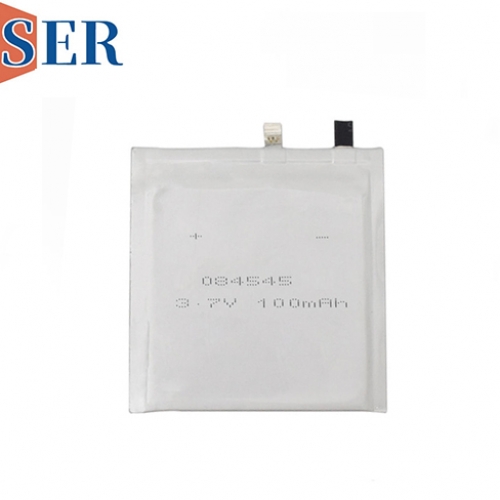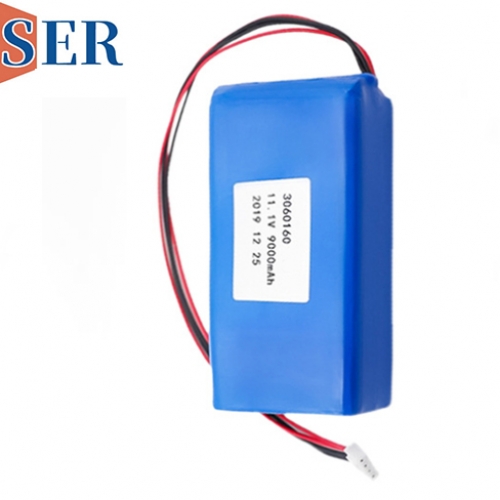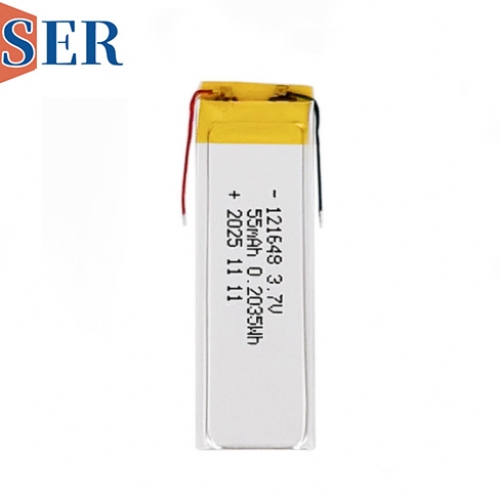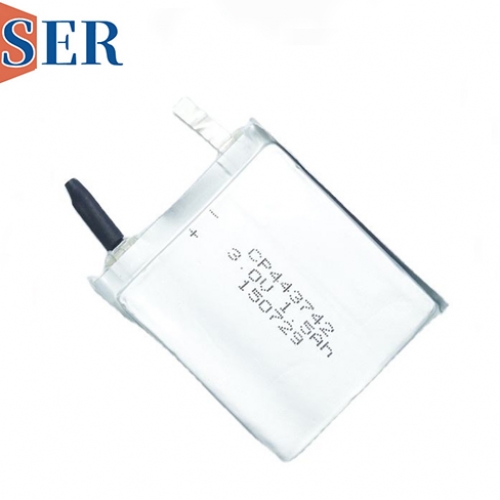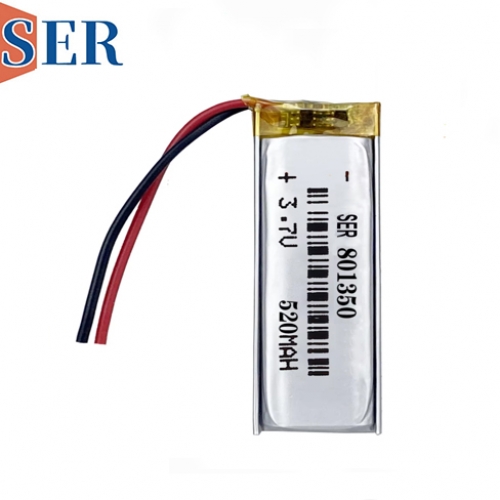Custom Low Temperature Li Polymer Battery
Custom Low Temperature Li Polymer Battery: A Comprehensive Overview
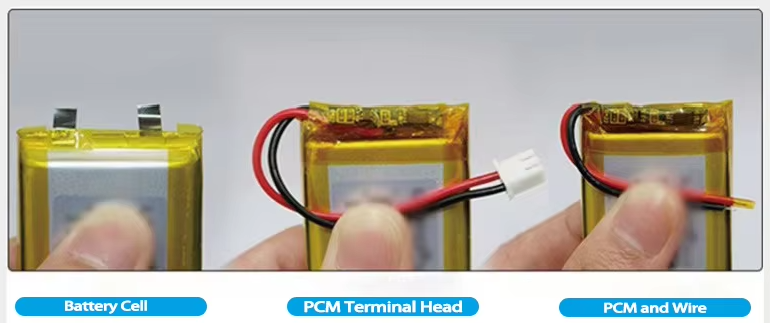
Introduction
In the realm of portable electronic devices, medical equipment, military applications, and a myriad of other industries, the demand for reliable and high - performance power sources has never been greater. Among the various battery technologies available, Lithium - Polymer (Li - Polymer) batteries have emerged as a popular choice due to their numerous advantages. One particular type of Li - Polymer battery that has gained significant attention is the custom low - temperature Li - Polymer battery. This article will delve into the details of custom low - temperature Li - Polymer batteries with different capacities such as 3.7V 600mAh, 800mAh, 2000mAh, and 2600mAh, focusing on their construction, applications, advantages, and the challenges associated with low - temperature operation.
Understanding Li - Polymer Batteries
Basic Structure
A Li - Polymer battery consists of several key components. The anode is typically made of graphite or other carbon - based materials, which can store lithium ions during the charging process. The cathode is usually composed of lithium metal oxides, such as lithium cobalt oxide (LiCoO₂), lithium manganese oxide (LiMn₂O₄), or lithium iron phosphate (LiFePO₄). The electrolyte in a Li - Polymer battery is a polymer gel or a solid - state electrolyte, which allows the movement of lithium ions between the anode and cathode. The separator, a thin porous membrane, prevents direct contact between the anode and cathode while allowing ion flow.
Working Principle
During charging, an external power source applies a voltage to the battery, causing lithium ions to move from the cathode through the electrolyte and separator to the anode. This process stores electrical energy in the battery. When the battery is discharged, the lithium ions move back from the anode to the cathode through the same path, generating an electric current that can power the connected device.
Custom Low - Temperature Li - Polymer Batteries
Importance of Low - Temperature Performance
In many real - world scenarios, especially in cold climates or for applications that operate in low - temperature environments, traditional Li - Polymer batteries may experience a significant decrease in performance. At low temperatures, the internal resistance of the battery increases, the ion mobility within the electrolyte decreases, and the electrochemical reactions slow down. This can lead to reduced capacity, lower voltage output, and in some cases, complete failure of the battery to function. Custom low - temperature Li - Polymer batteries are designed to overcome these limitations and provide reliable power even in sub - zero temperatures.
Capacity Options: 3.7V 600mAh, 800mAh, 2000mAh, and 2600mAh
600mAh and 800mAh Batteries: These relatively low - capacity batteries are often used in small, portable electronic devices such as wireless sensors, Bluetooth headsets, and some wearable technology. Their compact size and light weight make them ideal for applications where space is limited. Despite their low capacity, they can still provide sufficient power for short - term or low - power consumption devices, especially when operating in low - temperature conditions where energy efficiency is crucial.
2000mAh and 2600mAh Batteries: These higher - capacity batteries are suitable for more power - hungry devices. For example, in medical monitoring equipment that needs to operate continuously for extended periods in cold storage facilities or outdoor military devices that require reliable power during winter missions. The increased capacity allows these devices to run for longer durations without the need for frequent recharging, which is particularly important in remote or harsh environments.
3C Discharge Current
The 3C discharge current rating indicates the battery's ability to deliver a relatively high amount of current in a short period. A 3C discharge current means that the battery can discharge at a rate three times its nominal capacity. For a 600mAh battery, this would be a discharge current of 1.8A (600mAh * 3), and for a 2600mAh battery, it would be 7.8A (2600mAh * 3). This high - discharge capability is essential for applications that require sudden bursts of power, such as in some radio - controlled toys, emergency lighting systems, or certain industrial equipment.
Construction and Design for Low - Temperature Operation
Electrolyte Modification
One of the key aspects of designing a low - temperature Li - Polymer battery is modifying the electrolyte. Special additives can be incorporated into the polymer gel or solid - state electrolyte to improve ion mobility at low temperatures. These additives reduce the viscosity of the electrolyte, allowing lithium ions to move more freely even in cold conditions. Additionally, some researchers are exploring the use of new electrolyte materials with better low - temperature performance, such as certain types of ionic liquids.
Anode and Cathode Materials
The selection of anode and cathode materials also plays a crucial role in low - temperature performance. For the anode, using materials with a higher lithium - ion diffusion coefficient can enhance ion movement. Some advanced graphite - based anodes with nano - structured surfaces have shown improved performance at low temperatures. On the cathode side, optimizing the crystal structure and particle size of the lithium metal oxide can improve the electrochemical reactions at low temperatures. For example, lithium iron phosphate (LiFePO₄) cathodes are known for their relatively good low - temperature performance compared to some other cathode materials.
Battery Packaging and Thermal Management
The packaging of the battery is also important for low - temperature operation. Pouch cells, which are a common form of Li - Polymer batteries, offer some advantages in terms of flexibility and weight. However, they also require proper thermal management. Insulating materials can be used around the battery pack to reduce heat loss in cold environments. Additionally, some custom battery designs may incorporate heating elements that can be activated when the battery temperature drops below a certain threshold, helping to maintain an optimal operating temperature for the battery.
Applications of Custom Low - Temperature Li - Polymer Batteries
Medical Field
In the medical industry, many devices need to operate reliably in cold storage or transportation conditions. For example, portable diagnostic equipment used in remote areas or during winter expeditions may be exposed to low temperatures. Custom low - temperature Li - Polymer batteries ensure that these devices can function properly, providing accurate test results and life - saving information.
Military and Aerospace
Military equipment often operates in extreme environments, including cold climates. From handheld communication devices to unmanned aerial vehicles (UAVs) used in polar regions, low - temperature Li - Polymer batteries are essential for maintaining mission - critical operations. In the aerospace industry, satellites and spacecraft may encounter low - temperature conditions in space, and custom batteries are designed to withstand these harsh environments while providing the necessary power.
Outdoor and Industrial Equipment
Outdoor monitoring systems, such as environmental sensors in cold regions or security cameras in remote areas, rely on low - temperature Li - Polymer batteries for continuous operation. Industrial equipment used in cold storage facilities, such as forklifts or material handling systems, also benefit from these batteries, ensuring smooth and efficient operations even in freezing temperatures.
Advantages of Custom Low - Temperature Li - Polymer Batteries
High Energy Density
Li - Polymer batteries, in general, have a relatively high energy density compared to other battery technologies. This means that they can store more energy in a smaller and lighter package. Custom low - temperature Li - Polymer batteries maintain this advantage, providing a high amount of power per unit volume and weight, which is crucial for portable and space - constrained applications.
Flexibility in Design
The pouch cell design of Li - Polymer batteries allows for greater flexibility in terms of shape and size. Custom low - temperature Li - Polymer batteries can be tailored to fit the specific requirements of different devices, whether it is a thin, flat battery for a wearable device or a more irregularly shaped battery for a specialized piece of industrial equipment.
Long Cycle Life
With proper design and manufacturing, custom low - temperature Li - Polymer batteries can have a long cycle life. This means that they can be charged and discharged many times before their capacity significantly degrades. This is important for applications that require frequent use over an extended period, reducing the need for battery replacement and lowering overall costs.
Challenges and Limitations
Cost
One of the main challenges associated with custom low - temperature Li - Polymer batteries is the cost. The development and production of these batteries involve specialized materials, advanced manufacturing processes, and extensive testing to ensure their low - temperature performance. As a result, they are often more expensive than traditional Li - Polymer batteries. However, for applications where reliable low - temperature operation is critical, the additional cost may be justified.
Temperature Range Limitations
While custom low - temperature Li - Polymer batteries are designed to operate at lower temperatures than traditional batteries, they still have temperature range limitations. Extremely low temperatures, well below the designed operating range, can still cause significant performance degradation or even permanent damage to the battery. Additionally, at very high temperatures, the battery's safety and performance may also be compromised, highlighting the need for proper thermal management in all operating conditions.
Safety Concerns
Like all lithium - based batteries, Li - Polymer batteries pose certain safety risks, especially if they are misused or damaged. In low - temperature conditions, the risk of thermal runaway (a situation where the battery temperature rises uncontrollably) may be reduced compared to normal temperatures, but it is still a concern. Proper battery management systems (BMS) are essential to monitor the battery's temperature, voltage, and current, and to prevent overcharging, over - discharging, and short - circuits.
Conclusion
Custom low - temperature Li - Polymer batteries with capacities such as 3.7V 600mAh, 800mAh, 2000mAh, and 2600mAh, and a 3C discharge current, represent a significant advancement in battery technology. Their ability to provide reliable power in low - temperature environments makes them indispensable for a wide range of applications in the medical, military, outdoor, and industrial sectors. Despite the challenges associated with cost, temperature range limitations, and safety concerns, ongoing research and development efforts are likely to further improve the performance and reduce the drawbacks of these batteries. As the demand for portable and reliable power sources in extreme conditions continues to grow, custom low - temperature Li - Polymer batteries will play an increasingly important role in powering the technology of the future.

